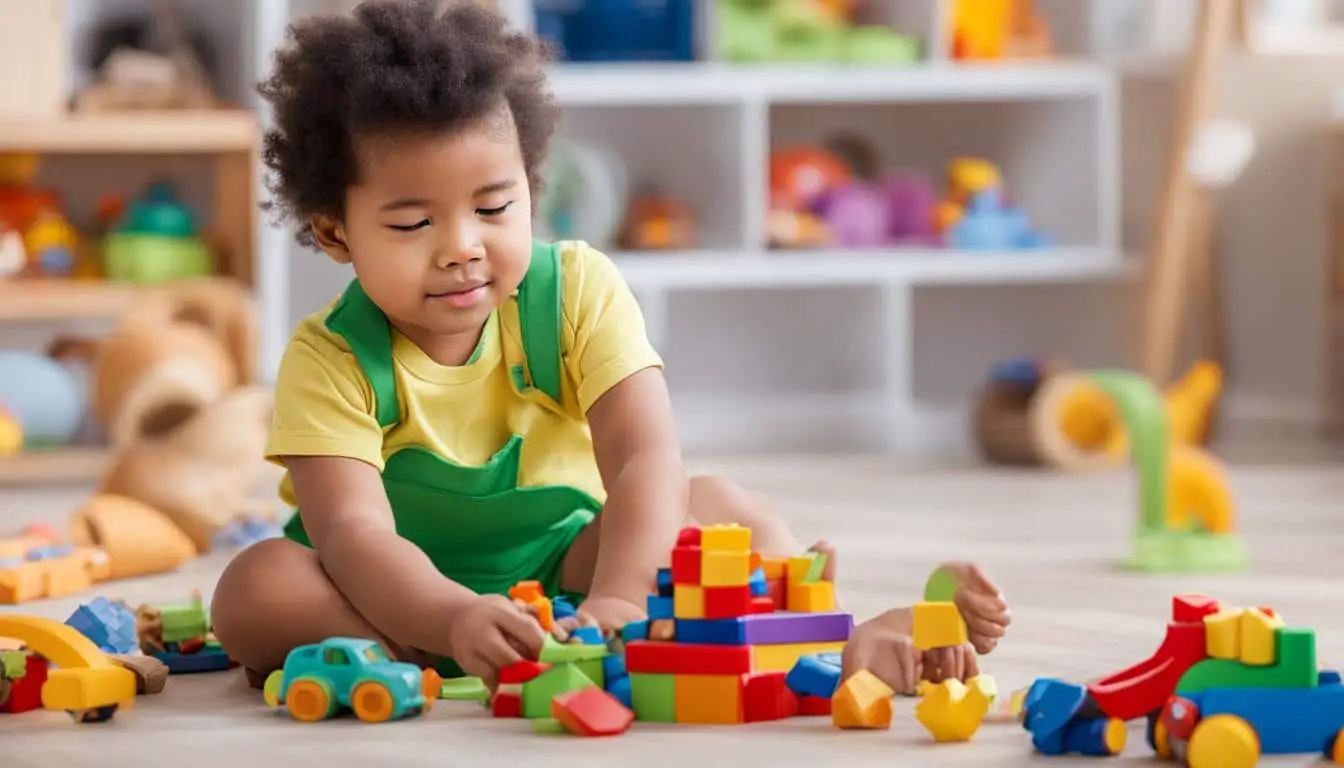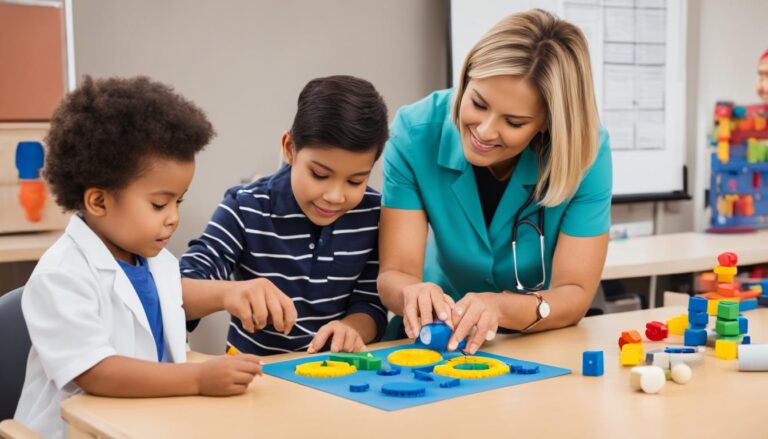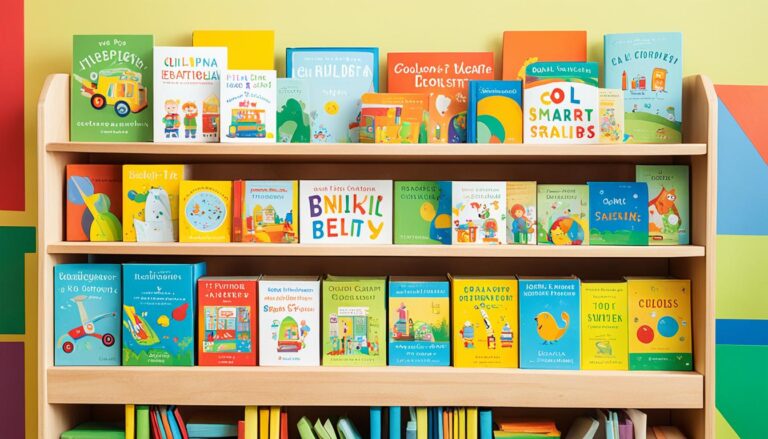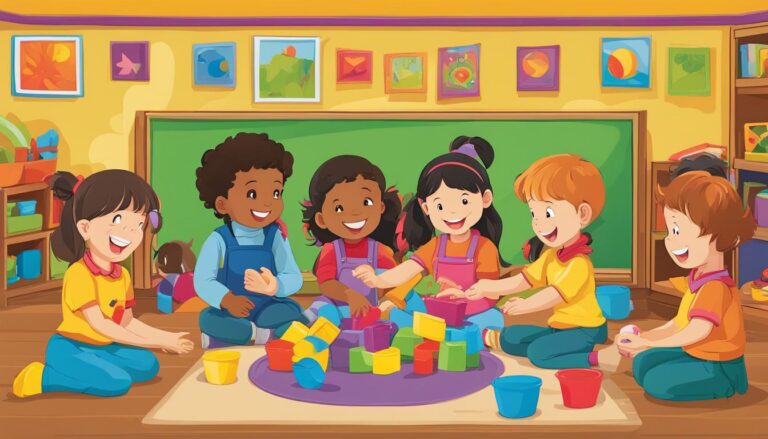Handling Behavioral Issues in Childhood: A Parent’s Guide
Welcome to my comprehensive guide on handling behavioral issues in childhood. As a parent, it can be challenging to navigate and address behavioral issues that may arise during your child’s early years. Every child is unique, and sometimes their challenging behaviors can leave us feeling frustrated and overwhelmed. However, with the right tools and techniques, we can create a positive environment that promotes emotional well-being and healthy development for our children.
In this guide, I will provide effective strategies for recognizing and addressing various behavioral issues that can occur during childhood. By understanding the root causes of these issues and implementing appropriate techniques, you can create a nurturing and supportive environment that promotes positive behavior and growth in your child.
Key Takeaways:
- Behavioral issues can be challenging for parents to manage but understanding the underlying reasons is crucial.
- Positive discipline techniques are more effective than punishment or negative reinforcement.
- Creating a structured and supportive environment can greatly impact a child’s behavior and well-being.
- Communication and collaboration with professionals can lead to targeted and effective treatment of behavioral issues if needed.
- By implementing these strategies, parents can promote healthy development and positive behavior in their children.
Understanding Behavioral Issues in Childhood
As a parent, it’s essential to recognize that misbehavior during childhood is normal and can occur due to various factors. By understanding the root causes of these behavioral issues, parents can implement effective solutions to support their children.
Common behavioral issues that occur during childhood include defiance, aggression, impulsivity, hyperactivity, anxiety, and depression. These issues can arise due to physical and emotional factors or a combination of both.
Physical factors that contribute to behavioral issues in childhood include lack of sleep, poor nutrition, chronic illness, or an underlying medical condition. On the other hand, emotional factors may include stress, trauma, environmental changes, family dynamics, or abuse.
It’s vital to recognize that each child is unique, and therefore, the reasons behind their behavioral issues will vary. Identifying and addressing these triggers is crucial for developing effective solutions and support systems that meet the child’s individual needs.
“Understanding the reasons behind a child’s behavior is the first step in working towards a solution.”
Common Behavioral Issues During Childhood
| Behavioral Issue | Physical Causes | Emotional Causes |
|---|---|---|
| Aggression | Physical pain, frustration, irritability, impulsivity | Stress, parental conflict, family dynamics, trauma, abuse |
| Defiance | Fatigue, physical discomfort, mood changes | Rebelliousness, anger, autonomy-seeking, lack of discipline |
| Hyperactivity | Sugar intake, lack of exercise, too much screen time | Stress, boredom, anxiety, impulsivity |
| Depression | Chronic illness, sleep deprivation, malnutrition | Grief, trauma, changes in routine, family conflict, environmental factors |
Understanding the root causes of behavioral issues during childhood can help parents develop strategies to alleviate or manage these challenges. By keeping an open mind and addressing these issues with patience and care, parents can guide children towards a more positive and fulfilling future.
Identifying Triggers and Patterns
Identifying triggers and patterns that may contribute to behavioral issues is crucial in resolving them effectively. As a parent, it’s important to understand the root causes of your child’s challenging behavior to develop appropriate strategies. By recognizing patterns and triggers, you can better understand the factors that may cause your child’s behavioral issues.
Some common triggers that contribute to negative behavior patterns among children include physical or emotional stress, lack of sleep, boredom, hunger, and illness. Identifying these triggers and patterns can help you create an environment that fosters positive behavior.
One way to identify triggers is to keep a behavior diary or log, where you record details of your child’s behavior, including what happened before, during, and after the outburst. Analyzing the data in the diary can help you recognize patterns and triggers that lead to behavioral issues.
Examples of Triggers and Patterns
| Trigger/Pattern | Behavioral Issue |
|---|---|
| Not Enough Sleep | Moody or Irritable |
| Overstimulation | Sensory Overload or Outbursts |
| Change in Routine | Resistance or Tantrums |
| Hunger | Cranky or Irritable |
| Unaddressed Emotions | Tantrums or Emotional Outbursts |
Some children may have underlying conditions such as anxiety, ADHD, or autism, which can lead to certain behavioral issues. Recognizing these conditions and seeking professional help can be essential in developing effective strategies of handling your child’s behavior.
Identifying triggers and patterns is an essential part of learning how to manage behavioral issues in childhood. Once you understand the underlying causes of negative behavior, you can implement appropriate techniques to help your child learn and grow positively.
Positive Discipline Techniques
As a parent, it’s essential to understand that discipline does not always have to involve punishments or negative reinforcement. Positive discipline techniques are effective ways to guide our children on making better behavior choices while fostering healthy relationships with them. Here are various positive discipline strategies that can be utilized to address behavioral issues:
- Clear Communication: Open and respectful communication is vital in any relationship, including that of the parent and child. Listening, being consistent and fair, and explaining the reasons behind certain rules are essential for promoting positive communication.
- Consistent Consequences: When rules are broken, it’s imperative to follow through with the agreed consequences consistently. However, these consequences should be reasonable, help the child learn from their behavior, and not be demeaning.
- Encouragement of Positive Behavior: Providing children with positive feedback when they display good behavior helps reinforce these behaviors by promoting healthy self-esteem and confidence.
- Modeling Positive Behavior: Children tend to mimic the behaviors they see around them, so it’s crucial to model positive behavior in ourselves. This action showcases the behavior we expect from our children.
- Encouraging Independence: Taking small steps to promote independence can help children feel in control of their actions and build self-esteem. Giving them age-appropriate responsibilities, choices, and letting them make mistakes, with guidance, are excellent ways to encourage independence.
- Use of Logical Consequences: Instead of punishment or a reward system, logical consequences are a great way to teach children about the direct outcomes of their actions, which make them responsible for their decisions.
Positive discipline techniques aim to promote healthy and positive behaviors while encouraging positive communication with children. As parents, we can utilize these techniques to help our children learn, grow, and develop into responsible, kind, and respectful individuals.

Creating a Structured and Supportive Environment
A structured and supportive environment is essential in managing behavioral issues in childhood. A routine can help children develop a sense of control and stability, reducing anxiety and challenging behaviors. Clear expectations and rules also provide children with a framework for appropriate behavior, while reinforcing positive actions creates a supportive atmosphere at home.
One effective method for creating a structured routine is to establish a daily schedule, including wake-up times, mealtimes, and bedtimes. This not only provides structure but can also improve sleep patterns, which play a significant role in behavioral regulation. Consistency in enforcing rules and boundaries can also help children understand what is expected of them, promoting clear communication and reducing confusion.
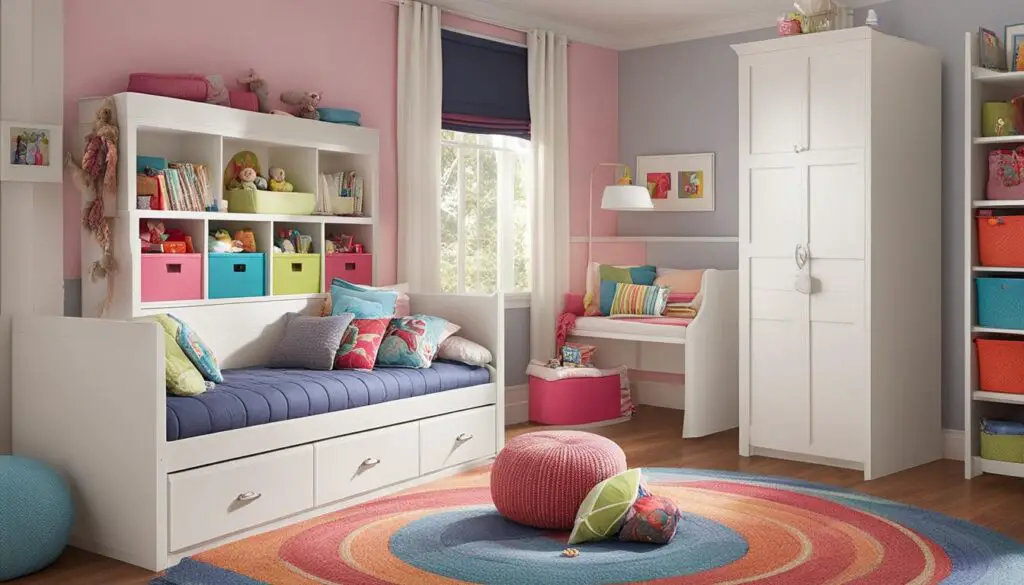
Examples of Structured and Supportive Techniques
| Technique | Description |
|---|---|
| Behavior charts | A visual aid that tracks a child’s behavior progress, reinforcing positive actions with incentives or rewards. |
| Timers | Using timers to structure tasks or activities, promoting time management skills and reducing stress. |
| Positive reinforcement | Praising and rewarding positive behavior, increasing motivation and self-esteem. |
| Consistent consequences | Enforcing consistent consequences for misbehavior, promoting accountability and responsibility. |
By implementing structured and supportive techniques at home, parents can create a nurturing environment that promotes healthy emotional and behavioral habits in their children.
Communicating and Collaborating with Professionals
When faced with behavioral issues in childhood, it may be necessary to seek the help of professionals such as pediatricians, therapists, or counselors. These experts can provide comprehensive assessments and specific interventions tailored to your child’s unique needs.
Effective communication and collaboration with these professionals are key to ensuring a successful outcome. To begin, schedule an initial appointment to discuss your concerns and provide the relevant background information.
During this appointment, it’s important to describe the behaviors you have observed in detail and be honest about any past attempts and consequences of addressing them. This information will be helpful in identifying the appropriate intervention approach to be implemented.
Make sure to ask any questions you may have and clarify any doubts that come up. Understanding the treatment plan and its potential outcomes will help you stay informed and be more actively involved in your child’s care.
Keep in mind that treatment plans may take time to show results, and progress may be slow. Continuing to communicate regularly with the professionals and being patient with the process is key to achieving the desired outcome.
Ultimately, effective communication and collaboration with professionals can provide parents with the tools and resources needed to effectively address behavioral issues in their child.
Tips for Effective Communication and Collaboration with Professionals
| Tip | Description |
|---|---|
| Be Honest | Describe your concerns in detail and be upfront about any past attempts to address behavioral issues. |
| Ask Questions | Ask any questions you may have and clarify any doubts that come up. |
| Provide Relevant Information | Provide as much relevant background information as possible to assist in the identification and implementation of an appropriate intervention. |
| Stay Involved | Stay informed and remain actively involved in your child’s care and treatment plan. |
| Be Patient | Understand that results may take time and progress may be slow. Patience is key to achieving the desired outcome. |
Conclusion
In conclusion, handling behavioral issues in childhood can be challenging, but it’s important to remember that there are effective strategies that can be employed to promote positive behavior. By understanding the root causes of these issues and identifying triggers and patterns, we can create a structured and supportive environment that fosters healthy development. Implementing positive discipline techniques and seeking support from professionals when necessary can also aid in managing difficult behaviors.
As a parent, it’s essential to approach behavioral issues with patience, understanding, and a willingness to learn and grow alongside our children. By implementing the strategies discussed in this guide, we can cultivate a nurturing and positive environment that promotes emotional well-being and healthy behavior in our children.
FAQ
How can I handle behavioral issues in childhood?
Handling behavioral issues in childhood requires understanding the root causes and implementing effective strategies. This guide provides parents with valuable techniques to create a positive environment for their children’s growth and development.
What are some common behavioral issues in childhood?
Childhood behavioral issues can include tantrums, aggression, disobedience, and hyperactivity. Understanding these common behaviors is key to addressing them effectively.
How can I identify triggers and patterns related to my child’s behavior?
Identifying triggers and patterns is crucial in addressing behavioral issues. This section will guide you on recognizing the factors that contribute to your child’s challenging behaviors.
What are positive discipline techniques I can use?
Instead of resorting to punishment, positive discipline techniques can guide your child towards better behavior choices. This section introduces various strategies that promote positive behavior in a constructive manner.
How can I create a structured and supportive environment?
Establishing a structured routine, setting clear expectations, and fostering a supportive atmosphere at home can significantly impact a child’s behavior. This section explores methods for creating a nurturing environment that promotes positive behavior.
When should I seek professional help for my child’s behavioral issues?
In some cases, behavioral issues may require support from professionals such as pediatricians, therapists, or counselors. This section provides guidance on effective communication and collaboration with these professionals to address behavioral issues comprehensively.
What is the takeaway from this guide on handling behavioral issues in childhood?
This guide equips parents with effective strategies for handling behavioral issues in childhood. By understanding the causes, implementing positive discipline techniques, creating a structured environment, and collaborating with professionals when needed, parents can foster a nurturing and supportive environment that promotes positive behavior and emotional well-being in their children.
